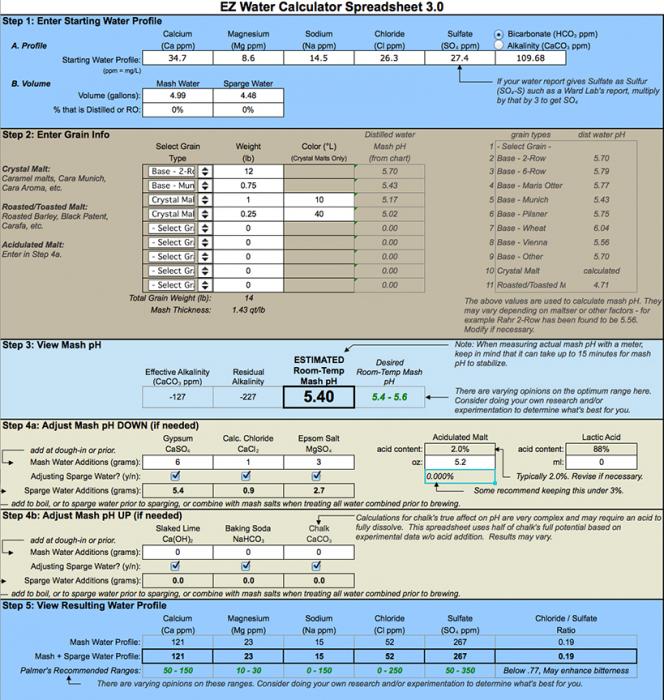Nice. Here's a real quick (probably too quick) series of thoughts for you.
pH 7.7
CaC03 122
Calcium 34
Chloride 26
Sodium 14
Sulphate 27
Those are the numbers that you'll want to work with.
pH is the measurement of how acidic the solution is. Pure water (neutral) is 7 for our purposes here. An ideal mash pH is usually about 5.4. Higher than that, and you'll get some astringent off flavors and lower efficiency, usually not noticeable until maybe about 5.6 and then more pronounced the further you get from there.
CaCO3 is essentially the ability of your solution to resist a change in pH. The higher this number, the more work you'd have to do to change the pH of your solution. 122 is pretty typical and not too bad of a starting point really.
The chloride and sulfate numbers are pretty low (this is good), and the main thing to worry about here is the ratio between the two. It is mainly a flavor thing in terms of the finished beer. This is an oversimplifcation, but if the ratio is about 1:1 (as your starting water already is), this is a balanced profile and won't impact flavor. The more you increase chloride above sulfate, the more malt flavor will be brought out. The more you increase sulfate above chloride, the more pronounced the bitterness from hops (also increases hops flavor perception to a lesser extent).
The sodium number is not as important. You have a good starting point, and if you raise it from there it will also bring out some malty flavors to the forefront.
The additives you'll probalby want to look at using are gypsum (adds calcium and sulfate ions), calcium chloride (self explanatory), lactic acid (directly lowers pH) and maybe canning salt (adds sodium and chloride ions).
I would set up your water profile at Brewers Friend and start messing around with your water volumes and water additions. Essentially, anything you add affects something else. Ex: adding gypsum will increase your calcium and your sulfate and will lower your mash pH a bit. Adding lactic acid will do nothing to pH in very small amounts but once it overcomes your CaCO3 pH buffering capacity, it will dramatically lower your mash pH. You have to work all these additions together until your chemistry matches what you're hoping for.
The most important things are mash pH and the chloride to sulfate ratio. You can easily find a lot of info about what numbers to shoot for based on style.
I would limit your lactic acid additions to no more than 6mL per 5 gallon batch or you'll start to be able to taste it.
Calcium levels between 50-150 will work well for any beer.
I'm sure others will add much better info than this to the conversation.
 )
)













![Craft A Brew - Safale BE-256 Yeast - Fermentis - Belgian Ale Dry Yeast - For Belgian & Strong Ales - Ingredients for Home Brewing - Beer Making Supplies - [3 Pack]](https://m.media-amazon.com/images/I/51bcKEwQmWL._SL500_.jpg)


































